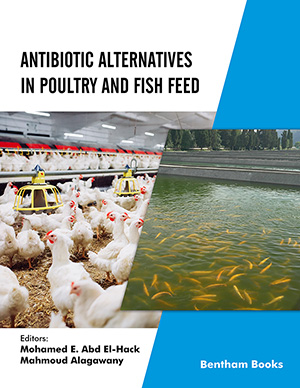Abstract
For 15 years, non-Saccharomyces starter cultures represent a new interesting segment in the dynamic field of multinationals and national companies that develop and sell microbial-based biotechnological solutions for the wine sector. Although the diversity and the properties of non- Saccharomyces species/strains have been recently fully reviewed, less attention has been deserved to the commercial starter cultures in term of scientific findings, patents, and their innovative applications.
Considering the potential reservoir of biotechnological innovation, these issues represent an underestimated possible driver of coordination and harmonization of research and development activities in the field of wine microbiology. After a wide survey, we encompassed 26 different commercial yeasts starter cultures formulated in combination with at least one non-Saccharomyces strain. The most recent scientific advances have been explored delving into the oenological significance of these commercial starter cultures. Finally, we propose an examination of patent literature for the main yeasts species commercialised in non-Saccharomyces based products.
We highlight the presence of asymmetries among scientific findings and the number of patents concerning non-Saccharomyces-based commercial products for oenological purposes. Further investigations on these microbial resources might open new perspectives and stimulate attractive innovations in the field of wine-making biotechnologies.
Keywords: Wine, alcoholic fermentation, non-Saccharomyces, starter cultures, yeasts, patents.
[http://dx.doi.org/10.3389/fmicb.2017.00995] [PMID: 28642742]
[http://dx.doi.org/10.1016/j.ijfoodmicro.2007.04.007] [PMID: 17512625]
[http://dx.doi.org/10.21548/38-2-1333]
[http://dx.doi.org/10.1016/j.fm.2008.05.005] [PMID: 18721672]
[http://dx.doi.org/10.1016/j.foodres.2010.05.017]
[http://dx.doi.org/10.1002/mnfr.201100010] [PMID: 21351251]
[http://dx.doi.org/10.3390/fermentation3040049]
[http://dx.doi.org/10.3390/fermentation2040021]
[http://dx.doi.org/10.1111/j.1755-0238.2005.tb00286.x]
[http://dx.doi.org/10.1016/S0963-9969(00)00168-X]
[http://dx.doi.org/10.1007/s00253-018-9117-z] [PMID: 29876604]
[http://dx.doi.org/10.1007/s00217-015-2497-8]
[http://dx.doi.org/10.1016/j.lwt.2015.05.018]
[http://dx.doi.org/10.1007/s00253-018-8861-4] [PMID: 29516146]
[http://dx.doi.org/10.1080/10408398.2014.983591] [PMID: 26066835]
[http://dx.doi.org/10.3389/fmicb.2016.00293] [PMID: 27014216]
[http://dx.doi.org/10.3389/fmicb.2016.00502] [PMID: 27148191]
[http://dx.doi.org/10.3389/fmicb.2016.00278] [PMID: 27014203]
[http://dx.doi.org/10.1111/jam.13735] [PMID: 29457321]
[http://dx.doi.org/10.1111/ajgw.12269]
[http://dx.doi.org/10.1007/s11306-016-0962-4]
[http://dx.doi.org/10.1007/s00217-014-2404-8]
[http://dx.doi.org/10.3389/fmicb.2017.01988] [PMID: 29085347]
[http://dx.doi.org/10.3389/fmicb.2018.00670] [PMID: 29696002]
[http://dx.doi.org/10.1007/s00253-016-7720-4] [PMID: 27405438]
[http://dx.doi.org/10.1007/s00217-016-2781-2]
[http://dx.doi.org/10.1111/ijfs.12937]
[http://dx.doi.org/10.1111/ajgw.12320]
[http://dx.doi.org/10.1007/s11947-016-1760-8]
[http://dx.doi.org/10.1002/jib.362]
[http://dx.doi.org/10.1007/s00253-014-5508-y] [PMID: 24430209]
[http://dx.doi.org/10.1111/j.1365-2621.2010.02472.x]
[http://dx.doi.org/10.1080/09571269708718105]
[http://dx.doi.org/10.21548/38-1-819]
[http://dx.doi.org/10.1007/978-3-319-60021-5_6]
[http://dx.doi.org/10.1016/j.ijfoodmicro.2014.04.003] [PMID: 24786553]
[http://dx.doi.org/10.1007/s11274-014-1618-z] [PMID: 24500666]
[http://dx.doi.org/10.1016/j.lwt.2014.06.019]
[http://dx.doi.org/10.1016/j.ijfoodmicro.2013.02.011] [PMID: 23558190]
[http://dx.doi.org/10.1111/1567-1364.12111] [PMID: 24164726]
[http://dx.doi.org/10.1016/B978-1-78242-015-6.00009-8]
[http://dx.doi.org/10.1007/s00253-018-8849-0] [PMID: 29492641]
[http://dx.doi.org/10.1002/jsfa.7700] [PMID: 26940283]
[http://dx.doi.org/10.1016/j.foodres.2018.02.034] [PMID: 29580506]
[http://dx.doi.org/10.1016/j.tifs.2015.05.002]
[http://dx.doi.org/10.1016/j.ijfoodmicro.2016.03.001] [PMID: 26971012]
[http://dx.doi.org/10.1016/j.fm.2017.10.008] [PMID: 29173630]
[http://dx.doi.org/10.1016/j.ijfoodmicro.2017.06.028] [PMID: 28668728]
[http://dx.doi.org/10.1016/j.fm.2014.05.007] [PMID: 25084640]
[http://dx.doi.org/10.1016/j.ijfoodmicro.2015.04.037] [PMID: 26001522]
[http://dx.doi.org/10.1016/j.fm.2010.12.001] [PMID: 21569929]
[http://dx.doi.org/10.1007/s00253-018-8914-8] [PMID: 29552694]
[http://dx.doi.org/10.1093/femsyr/fov045] [PMID: 26071435]
[http://dx.doi.org/10.1023/A:1008825928354]
[http://dx.doi.org/10.1111/j.1567-1364.2009.00579.x] [PMID: 19807789]
[http://dx.doi.org/10.1007/BF00128395]
[http://dx.doi.org/10.1007/s13213-015-1090-5]
[http://dx.doi.org/10.3389/fmicb.2016.00411] [PMID: 27065975]
[http://dx.doi.org/10.1016/j.ijfoodmicro.2009.06.008] [PMID: 19619911]
[http://dx.doi.org/10.1007/s11274-014-1774-1] [PMID: 25388474]
[http://dx.doi.org/10.1007/s00253-014-6197-2] [PMID: 25408314]
[http://dx.doi.org/10.1111/jam.12446] [PMID: 24443784]
[http://dx.doi.org/10.1007/s00253-014-6193-6] [PMID: 25388943]
[http://dx.doi.org/10.1016/j.foodchem.2016.04.024] [PMID: 27173534]
[http://dx.doi.org/10.1111/j.1574-6941.2010.01037.x] [PMID: 21223330]
[http://dx.doi.org/10.1111/ajgw.12326]
[http://dx.doi.org/10.1007/s00217-016-2757-2]
[http://dx.doi.org/10.1016/j.foodres.2018.02.029] [PMID: 29580483]
[http://dx.doi.org/10.1111/lam.13001] [PMID: 29709063]
[http://dx.doi.org/10.3390/molecules22050739] [PMID: 28471391]
[http://dx.doi.org/10.1016/j.foodchem.2017.07.037] [PMID: 28873660]
[http://dx.doi.org/10.1111/j.1574-6968.2004.tb09761.x] [PMID: 15336427]
[http://dx.doi.org/10.1016/j.ijfoodmicro.2015.01.009] [PMID: 25625909]
[http://dx.doi.org/10.1128/AEM.06768-11] [PMID: 22247148]
[http://dx.doi.org/10.3390/molecules20069510] [PMID: 26016543]
[http://dx.doi.org/10.1371/journal.pone.0151102] [PMID: 27007548]
[http://dx.doi.org/10.1016/j.fm.2016.08.010] [PMID: 27697163]
[http://dx.doi.org/10.1016/S0168-1605(03)00246-0] [PMID: 12892920]
[http://dx.doi.org/10.1016/j.lwt.2014.06.059]
[http://dx.doi.org/10.1016/j.fm.2011.12.020] [PMID: 22365358]
[http://dx.doi.org/10.1016/j.fm.2016.06.007] [PMID: 27375260]
[http://dx.doi.org/10.1038/s41598-018-22580-7] [PMID: 29515178]
[http://dx.doi.org/10.3389/fmicb.2018.01260] [PMID: 29942296]
[http://dx.doi.org/10.1016/j.fm.2013.07.001] [PMID: 24010615]
[http://dx.doi.org/10.3389/fmicb.2016.00482] [PMID: 27092133]
[http://dx.doi.org/10.1099/00207713-49-1-329] [PMID: 10028278]
[http://dx.doi.org/10.1006/fmic.2000.0347]
[http://dx.doi.org/10.3389/fmicb.2015.01563] [PMID: 26793188]
[http://dx.doi.org/10.1371/journal.pone.0094246] [PMID: 24718638]
[http://dx.doi.org/10.3389/fmicb.2015.01569] [PMID: 26834719]
[http://dx.doi.org/10.1016/j.fm.2014.03.012] [PMID: 24929736]
[http://dx.doi.org/10.1016/j.foodcont.2017.12.023]
[http://dx.doi.org/10.1016/j.fm.2018.03.009] [PMID: 29706323]
[http://dx.doi.org/10.1371/journal.pone.0184652] [PMID: 28910346]
[http://dx.doi.org/10.1016/S0950-3293(03)00059-4]
[http://dx.doi.org/10.1016/j.fm.2012.10.004] [PMID: 23200661]
[http://dx.doi.org/10.1038/nature01018] [PMID: 12167877]
 79
79 11
11



















